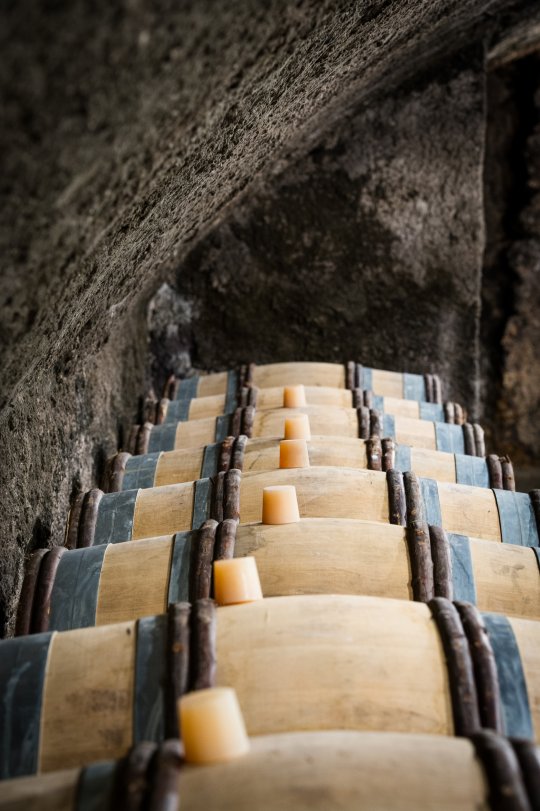In this chapter, it is assumed that the temperature and humidity of the cellar are adjustable. In reality, this is not always the case, especially with natural underground cellars.
Some cellars have a relative humidity close to 100% and a powerful buffering effect on the temperature. Others are drier and heat up relatively quickly in the summer.
Such cases are too specific to be discussed here and only general aspects concerning controllable ageing methods will be considered.
5.1.2.a Temperature and humidity
Which parameters are influenced by temperature during ageing?
Temperature is one of the crucial factors to be monitored during the ageing process. It influences several parameters:
- Oxygen dissolution: the higher the temperature, the less oxygen is soluble in the wine and vice versa
- Oxygen reactions with wine compounds: the higher the temperature, the faster the reactions (for more details, see Oxygen management
- Microbial development: the lower the temperature, the slower the development (for more details, see Microbiological monitoring
- Evaporation: the higher the temperature, the greater the rate of evaporation of wine through the barrels
Successfully controlling temperature conditions in the cellar thus helps to control the wine's evolution.
Which parameters are influenced by relative humidity during ageing?
The cellar's humidity affects the following parameters:
- Evaporation of wine through the barrels is the primary parameter impacted by the cellar's humidity. The higher the humidity, the less the evaporation.
- In humid conditions, the fraction of evaporated alcohol is higher.
- Dry conditions (less than 70% relative humidity) increase wines' oxidation. Conversely, humid conditions slow down their oxidation.
What is the typical temperature and humidity required for good-quality barrel ageing?
The temperature should be between 10 and 18°C. Below this temperature, the wine's evolution stops and above it, evolution is too fast.
As far as humidity is concerned, it should usually be above 75/80% and can be up to 100%. If the objective is to slightly lower the alcohol content while reducing evaporation, the highest possible humidity is desirable.
However, it is never easy to control these parameters perfectly in the field.
What are the benefits of air movement and renewal in the cellar?
Movement of air in the cellar enables a uniform temperature and humidity, and thus minimal variation between barrels. It also allows air renewal and the elimination of odours such as sulphur during sulphuring.
In a totally closed system, stagnant air combined with a humid atmosphere can lead to the growth of Penicillium and Aspergillus-type mould on the walls or even the barrels in extreme situations. In some cases, the appearance of parasitic odours that may contaminate the wine can appear. They are not normally problematic, fungal odours such as octenol usually disappear from the cellar with aeration and disappear from the barrel with racking. Air renewal is therefore important.
However, renewing the air too frequently can have negative effects such as drying out the environment and increasing evaporation.

